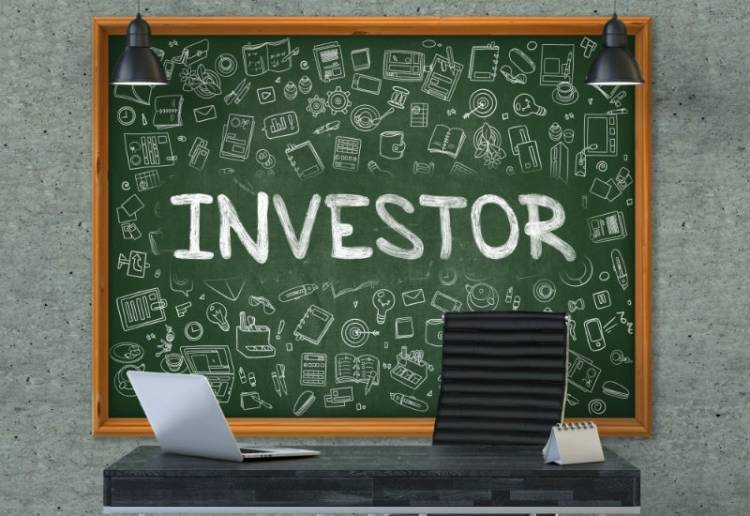At Startup Grind: Investor Meetings
One of the perks of being selected in the Top 50 at Startup Grind is the introduction to their network of Investors. Prior to arriving at the conference, we were asked to provide a response to a few additional questions for this benefit. Our answers were compiled into an introductory profile that Startup Grind provided to their network. Investors would then pick and choose which company or companies they would like to have a meeting with. While this system doesn't necessarily guarantee every company will have a meeting, it does ensure that the meetings match companies with truly interested Investors.

One of the perks of being selected in the Top 50 at Startup Grind is the introduction to their network of Investors. Prior to arriving at the conference, we were asked to provide a response to a few additional questions for this benefit. Our answers were compiled into an introductory profile that Startup Grind provided to their network. Investors would then pick and choose which company or companies they would like to have a meeting with. While this system doesn't necessarily guarantee every company will have a meeting, it does ensure that the meetings match companies with truly interested Investors.
In our case, we were told at the end of Opening Night that we had 4 such Investor meetings scheduled. Here's how we prepared:
Investor Research
Part 1: Venture Capital Procedure Research
If you're not a company in Silicon Valley, going to Silicon Valley and speaking to a VC firm is quite an overwhelming experience. Knowing how VC companies work, make investments and stay invested is integral. Learning just the basics will at least give you some knowledge so you're not going into a meeting blind. Our research began when we did our first interview for Startup Grind and continued up until our first meeting at the event. We recommend the book: Venture Deals: Be Smarter Than Your Lawyer and Venture Capitalist by Brad Feld and Jason Mendelson.
Part 2: Individual Investor Research
As in any job interview, you should do the research on your interviewer and his/her company. Your research should try to answer these fundamental questions:
1) Who is the Investor and what do they do at their company?
2) What does their company do/stand for?
3) Has the company had success recently? In what way?
4) Has the company had failures recently? In what way?
And lastly,
5) Find one personal thing about your interviewer that isn't work related.
It could be that they like running, have 5 dogs, enjoy cooking or sing in a band. Social media is a great resource, so use it! You might find you have something in common with your interviewer.
The Perfect Pitch
Thanks to Pitch Bootcamp, we’d already aced our 60 second speech. We expanded this into a 3-5 minute intro that addressed:
1) The Problem (customer pain points)
2) The Solution (how those pain points are solved)
3) What we do (how we provide the solution)
4) Why we do it better (compared to our competitors)
And finally,
5) What we need (what are the steps to growth?)
Now, in our case, we're assuming that the folks we're speaking to can grasp the basics of what property management is. But this isn't always the case. And when someone simply can't understand what property management is and why it's so important in today's world of mass development, we've learned it's best to make a friend rather than try to push it. It just simply isn't possible for everyone to understand the concept of everything. And while property management is our bread and butter, it certainly isn't everyone's cup of tea.
Check out the book: Pitch Perfect: How to Say It Right the First Time, Every Time by Bill McGowan.
The Pitch Deck
Taking that 5 minute pitch and turning it into a beautiful pitch deck is the next natural step in the preparation process. Why? Once you've met an Investor and peaked their interest, this will be the next thing they ask for. Having it on point and ready to send is going to make you a whole lot more memorable.
We crafted ours by looking at a lot of examples and following the storytelling process. As our goal is not 100% to get an investment, we generalized ours so that it could be used in various situations. We also made it a download instead of an attachment so that it could be updated in real-time. If you'd like to see a copy of ours, send us a message.
We also suggest checking out the book Get Backed: Craft Your Story, Build the Perfect Pitch Deck, and Launch the Venture of Your Dreams by Evan Baehr and Evan Loomis.
Investor Meetings
With all of the prep out of the way, we made our way to our meetings. Even armed with all of our research and prep, we approached our meetings like we were meeting people - as funny as that sounds. People are individuals with quirks, interests and stories. We asked these people to introduce themselves and invited them to treat us as people in return. As a result, we came out with some great relationships, opportunities and feedback on what we're doing, how they could be involved and where we should be heading. One of our meetings was with an Investor who couldn't quite grasp the concept of property management. So we simply turned it into a session where we asked for some advice and it still ended up being a great meeting.
In the end, our goal of making some great relationships was fulfilled and we now have some great minds to turn to when we have a question or seven.
Follow-up
If you've managed to snag the business card of an Investor who you jelled with, the next step is awesome follow-up. Send an email with a thank you and attach your pitch deck, even if it may not lead to an investment immediately. As you gather more and more interest you may want to create a special mailing list where you send out some great tidbits about your company's progress. We've done this with the introduction of our newest character Dave (#IAMDAVE) with his own section here.
Next up, we talk about our Quickfire Pitch that we gave on the main stage at Startup Grind.
View all the posts about our journey here.

 contact@atassist.com
contact@atassist.com 





